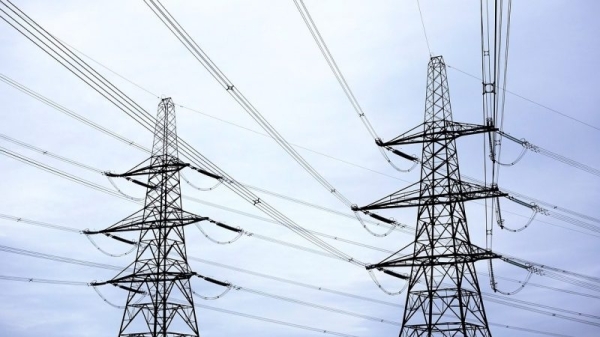LEAK: Brussels plans to inject more stability in EU electricity market

The European Commission is preparing to table a reform of EU electricity market rules next week, aiming to introduce more stability through greater use of long-term contracts and a renewed focus on demand reduction measures, according to a leaked draft seen by EURACTIV.
The changes come in response to the energy crisis that “showed how exposed consumers and industries are and our lack of resilience to energy price spikes”, says the draft proposal, due to be tabled on 16 March.
EU electricity prices have increased sharply since mid-2021, leading to calls for the EU to ease the burden on consumers and ensure sufficient incentives for investments in cheap renewables like wind and solar.
“Whilst the EU’s single market delivers huge gains and growth across Europe, the recent energy crisis has highlighted that the energy market’s short-term focus can distract from broader, longer-term goals,” the draft says in reference to the EU’s goal of reducing emissions to net-zero by 2050.
“The reflection of short-term prices in consumers bills led to price shocks where energy bills of many consumers tripled or quadrupled, even as the costs of wind and solar power were declining,” it adds.
To tackle this, the European Commission’s reform looks at complementing short-term markets with “a greater role of longer term instruments”, including more fixed-priced contracts for consumers and easier investments in clean technology.
The proposal swerves away from demands from EU countries like Spain and France, which had initially pushed for a radical overhaul to decouple electricity prices from the wholesale gas market.
While gas is used for power generation in countries like Germany and Belgium, this is hardly the case in Spain and France, which produce most of their electricity from renewables or nuclear energy.
This means that the retail price of electricity in those countries is vulnerable to variations in gas prices, even though they may not use gas for power generation.
“We are convinced that this impact could be modulated if the functioning of the market were different,” said a Spanish government official. “The electricity market is designed in such a way that it is efficient when the power generation technologies that are used have very similar prices. When this is not the case, it works badly,” the official told EURACTIV.
Long-term contracts
Rather than the radical overhaul pushed by France and Spain, the leaked proposal is closer to what the industry has called for – a more targeted approach focused on long-term contracts.
“The Commission has listened to the long-standing recommendation of the industry on long-term signals – signals both for investors and customers – so that they can choose their exposure to extreme price volatility,” said Kristian Ruby, the secretary general of electricity industry group Eurelectric.
A key objective of the reform is strengthening the EU’s industrial competitiveness, both by incentivising more investment in renewable energy and keeping prices down for EU industry, which faces global competition from places with cheaper energy, like the US.
Support for power generation includes “direct price support schemes” for new investments in electricity production in the form of two-way contracts for difference (CfDs) for wind, solar, geothermal, hydropower, and nuclear projects.
CfDs are countersigned by the state and offer a guaranteed level of revenue to energy generators, ensuring they invest in new production capacity even when wholesale electricity prices are low. When prices are high, excess revenues are distributed to final electricity customers based on their share of overall consumption.
Alongside CfDs, the European Commission is looking at boosting other long-term contracts, like power purchase agreements (PPAs) that are passed between private producers and buyers of electricity. Under the proposal, EU countries would have to put in place instruments to reduce the financial risks of PPAs.
Long-term contracts like PPAs and CfDs are expected to “enhance the competitiveness of EU industry facing excessive volatile prices”, according to the draft.
The long-term revenue stability provided by CfDs is valuable, especially for technologies like offshore wind and nuclear power that require significant capital expenditures and involve low operational expenditures, says PGE, the Polish electricity utility.
However, it should be kept only as a voluntary option for generators and as an alternative to market revenues. “Generators should be incentivised, but not forced to use this option,” PGE says.
France too is looking at CfDs to provide stable revenues for its existing fleet of nuclear power plants. “We think the possibility of putting existing installations under contracts for difference is a possibility that should be open to the member states,” said a source at the cabinet of Agnès Pannier-Runacher, the French energy transition minister.
However, CfDs have one big disadvantage – they rely on governments to foot the bill when electricity prices are low. As such, they need to be vetted by the European Commission, which enforces state aid rules within the 27-country bloc.
“There is the question of how much ability states actually have to provide significant fiscal resources for the power system for something like power purchase agreements and contracts for difference,” said Georg Zachmann from the Bruegel economic think-tank.
“We’re talking about a lot of money because those power investments are something to the tune of €80 billion a year,” he told EURACTIV.
And, while it is good that the European Commission is pointing out best practice in long-term contracts, their design is key and there should be more guidance from the Commission on that, said Bram Claeys, an electricity market expert with the Regulatory Assistance Project (RAP), another think-tank.

EU aiming for ‘targeted’ reform of electricity market, energy chief says
The European Commission will present “targeted” proposals by mid-March to overhaul the EU’s electricity market, the bloc’s energy chief said on Monday (27 February), adding that the reform will focus on long-term power contracts for industry to mitigate price volatility.
Small consumers and SMEs
Another part of the reform relates to households and small and medium enterprises (SMEs). It looks at increasing their ability to be active players in the electricity market by enabling power sharing within communities and increasing access to more long-term, stable contracts.
“Active customers shall be entitled to share renewable energy between themselves based on private agreements or through a legal entity and up to 100 MW (megawatts) of total installed capacity,” according to the leaked draft.
This will increase access to local consumption of solar electricity while supporting the grid, according to SolarPower Europe, an industry body.
“That means neighbourhoods can collectively benefit from their solar rooftops,” said Naomi Chevillard, head of regulatory affairs at SolarPower Europe.
Consumers will also be provided with the right to fixed-price contracts alongside dynamic contracts, as well as better information.
This will allow them to choose between long-term, stable prices or adjusting their consumption to take advantage of rises and falls in the price of electricity – for instance, by charging electric vehicles overnight.
The draft also introduces measures to ensure affordable energy in times of crisis, like when wholesale prices are substantially above the five-year average or when there are sharp increases in retail prices.
In these cases, EU countries can “apply public interventions in price setting for the supply of electricity” to SMEs, limited to 80% of their highest annual consumption as an incentive to reduce demand.
EU countries may also set the household electricity price lower than that at which it is provided as long as it is 80% of median household consumption to incentivise demand reduction.
“The crisis has demonstrated how important it is to have well-conceived consumer protection mechanisms in place, especially for vulnerable consumers,” said Claeys.
But while he welcomed some measures to protect consumers, he added that Europe needs to do more to enable them to partake in the value of flexibility and renewables.

What to expect from the EU’s power market revamp
In politics, sometimes there are telltale signs of where things are headed. Such is now the case for the EU’s upcoming electricity market reform, writes Frédéric Simon.
‘Peak shaving’
To tame excessive price volatility, the European Commission is looking at building more flexibility in the electricity market, by supporting demand-side measures that reduce peaks in electricity consumption.
“The more flexible the system is […] the more stable prices can be and the more renewable energy the system can integrate,” the draft reads.
It includes an obligation for EU countries to define an indicative national objective for demand-side response and storage in their updated National Energy and Climate Plans.
At the grid level, system operators will be expected to assist in the integration of renewables by increasing transparency around the availability of grid connection capacity to help developers know where to build projects.
This has been a problem in countries like Poland, where 30 gigawatts of mostly renewable power have been denied access to the grid.
The draft also introduces measures that can be brought in to reduce demand during peak hours, when the most expensive power plants are called in – usually those running on gas.
Under the draft proposal, transmission system operators will be enabled to procure so-called “peak shaving” products in order to call for electricity demand reduction during peak hours.
Reducing demand at these times would limit the use of the most expensive electricity and contribute to better integration of renewables in the system, the draft document says.
The reform will be proposed on 16 March and will then be handed over to the European Parliament and EU countries for approval.
Draft Electricity Market Design Proposal (1)> Read the full draft electricity market reform proposal below or download here.



